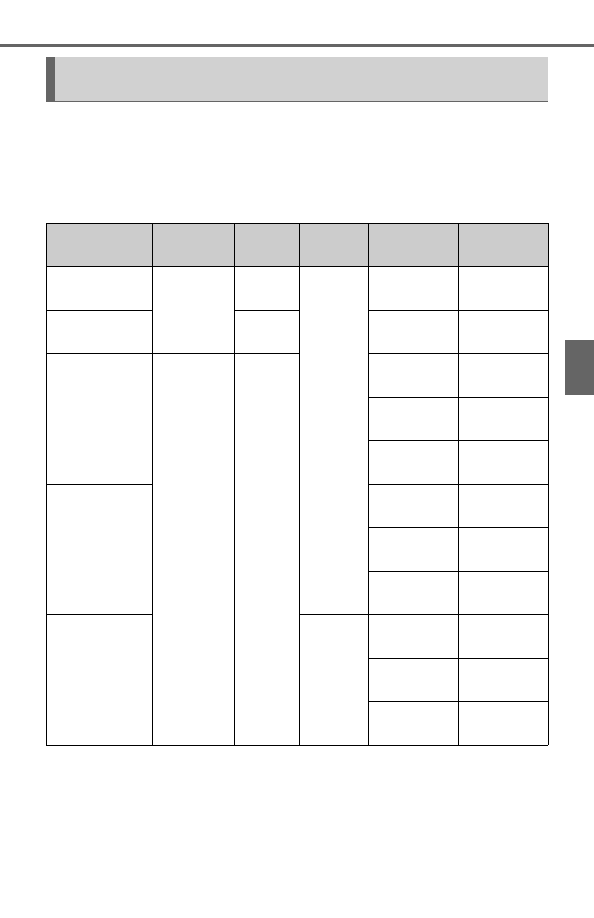Toyota Tundra (2019 year). Manual - part 12

177
4-1. Before driving
4
Dr
Confirm that the gross trailer weight, gross combination weight, gross
vehicle weight, gross axle weight and tongue weight are all within the
limits.
■
GCWR
*
5
and TWR
*
5
Double Cab models
GCWR, TWR, Unbraked TWR, Fifth wheel and Gooseneck towing
TWR
*
5
: These models meet the tow-vehicle trailering requirement of SAE
International per SAE J2807.
Model code
*
1
Engine
Driving
system Bed type
GCWR
TWR
UPK51L-
CRTSKA
1UR-FE
engine
2WD
Standard
12500 lb.
(5670 kg)
6800 lb.
(3080 kg)
UPK56L-
CRTSKA
4WD
12500 lb.
(5670 kg)
6500 lb.
(2945 kg)
USK51L-
CRTSKA
3UR-FE
engine
2WD
14000 lb.
(6350 kg)
*
2
8300 lb.
(3760 kg)
*
2
16000 lb.
(7255 kg)
*
3
10200 lb.
(4625 kg)
*
3
16000 lb.
(7255 kg)
*
4
10100 lb.
(4580 kg)
*
4
USK51L-
CRTLKA
14000 lb.
(6350 kg)
*
2
8200 lb.
(3715 kg)
*
2
16000 lb.
(7255 kg)
*
3
10200 lb.
(4625 kg)
*
3
16000 lb.
(7255 kg)
*
4
10100 lb.
(4580 kg)
*
4
USK52L-
CHTSKA
Long
14000 lb.
(6350 kg)
*
2
8100 lb.
(3670 kg)
*
2
16000 lb.
(7255 kg)
*
3
10100 lb.
(4580 kg)
*
3
16000 lb.
(7255 kg)
*
4
10000 lb.
(4535 kg)
*
4